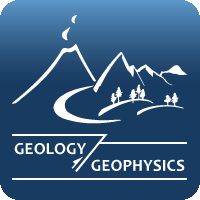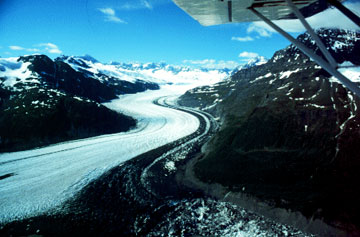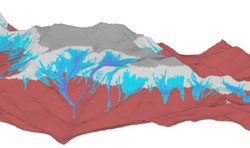Contact Us
Department of Geology and Geophysics
1000 E. University Ave.
Laramie, WY 82071-2000
Phone: (307) 766-4141
Fax: (307) 766-6679
Email: geol-geophys@uwyo.edu
Surface Processes and Cold Regions
Why do landscapes look the way they do? What controls the height and jaggedness of high mountain peaks? What role does glacial erosion play in shaping landscapes, and how will it be affected by climate change? Why do rivers meander, how much sediment do they carry, and how are floodplain and riparian habitats generated?
To tackle these and other problems in the broad field of surface processes, glaciologists and geomorphologists at UW conduct research that integrates across geology and geophysics, and often extends into other fields such as botany, wildlife ecology, paleoclimatology, paleontology, and geography. This integrative approach is a founding principle of the University's Roy Shlemon Quaternary Sciences Center. Our scientists seek a detailed understanding of the earth surface processes spanning a range of scales in space and time, from the effects of global climate change on ice dynamics to the effects of regional human activities on riverine habitats.
The Cold Regions Analysis Group (CRAG) focuses on cryospheric processes in particular. A driving goal of CRAG's work is understanding how the mechanics and thermodynamics of snow and ice affect the surface processes that influence glaciers, rivers, landslides, and avalanches. CRAG tackles problems such as deformation in glacial ice, the relationship between climate and glacial erosion, sub-glacial hydrology, and stress propagation in snow. CRAG uses a variety of research methods including field observations, physical modeling, laboratory work, and numerical modeling. CRAG field work relies heavily on instrumentation for quantitative data that enables mechanistic studies of surface processes. Whether it's the Himalaya, Antarctica, Alaska, Greenland, the nearby Laramie River, or our state-of-the art cold-room laboratory, one thing is for sure -- it's likely to be cold.
Our surface processes program, which is separate from CRAG, focuses on studies of the "critical zone". The critical zone is the planet's outer, life-sustaining layer, from the top of vegetation to unaltered rock at depth under soil. Study of the critical zone integrates across many research disciplines, from biology to mineralogy and from tectonics to atmospheric chemistry and climate change. So there is a lot of potential for fascinating, synergistic studies of earth systems processes. Part of our approach here at UW is to use cosmogenic isotopes and other sediment tracers to quantify rates of physical erosion and chemical weathering. These measurements are crucial for quantitative study of the critical zone, because erosion and weathering are key regulators of soil formation, watershed geochemistry, and landscape evolution.
Contact Us
Department of Geology and Geophysics
1000 E. University Ave.
Laramie, WY 82071-2000
Phone: (307) 766-4141
Fax: (307) 766-6679
Email: geol-geophys@uwyo.edu


